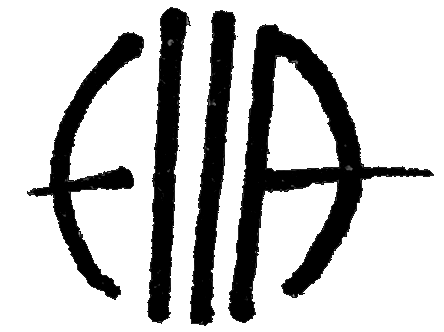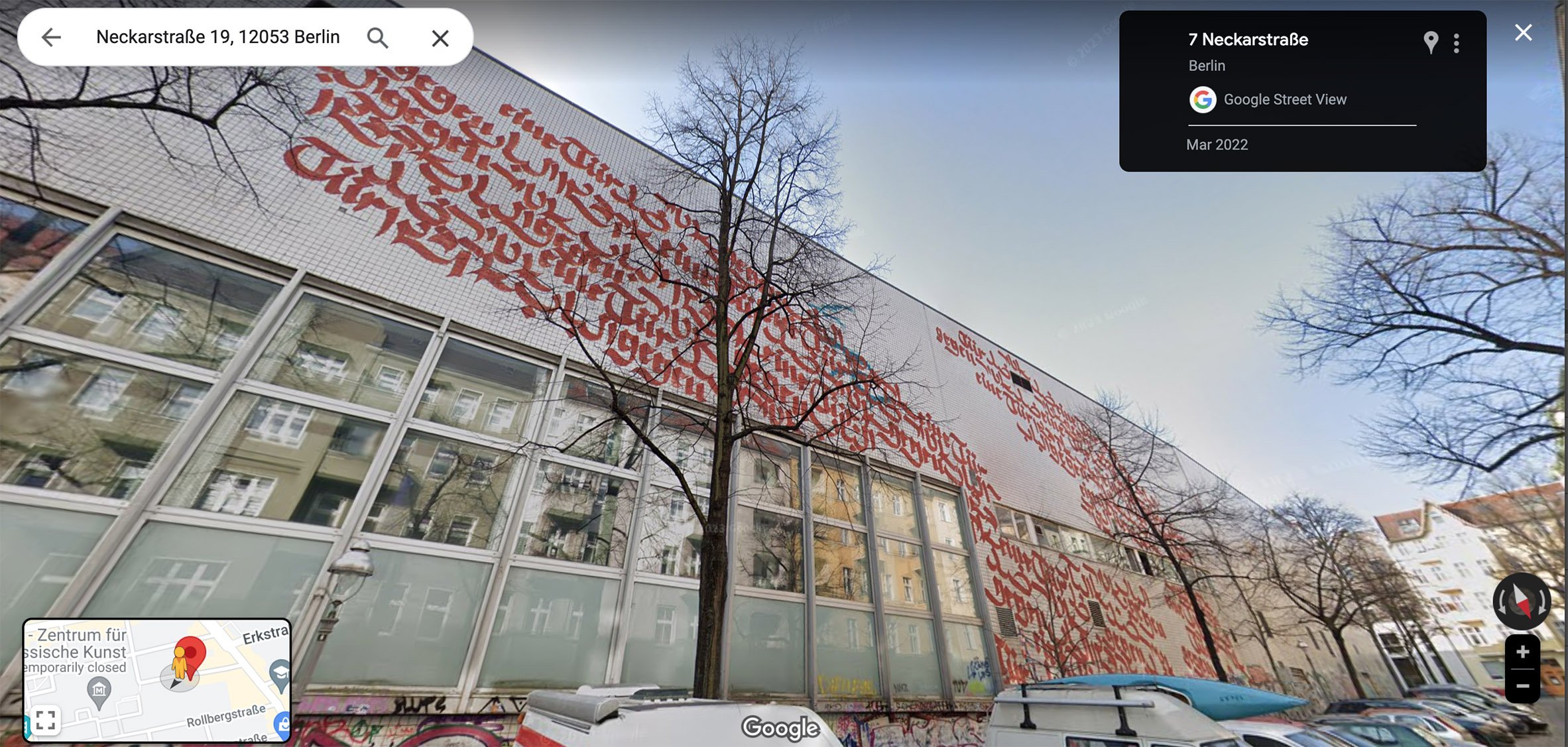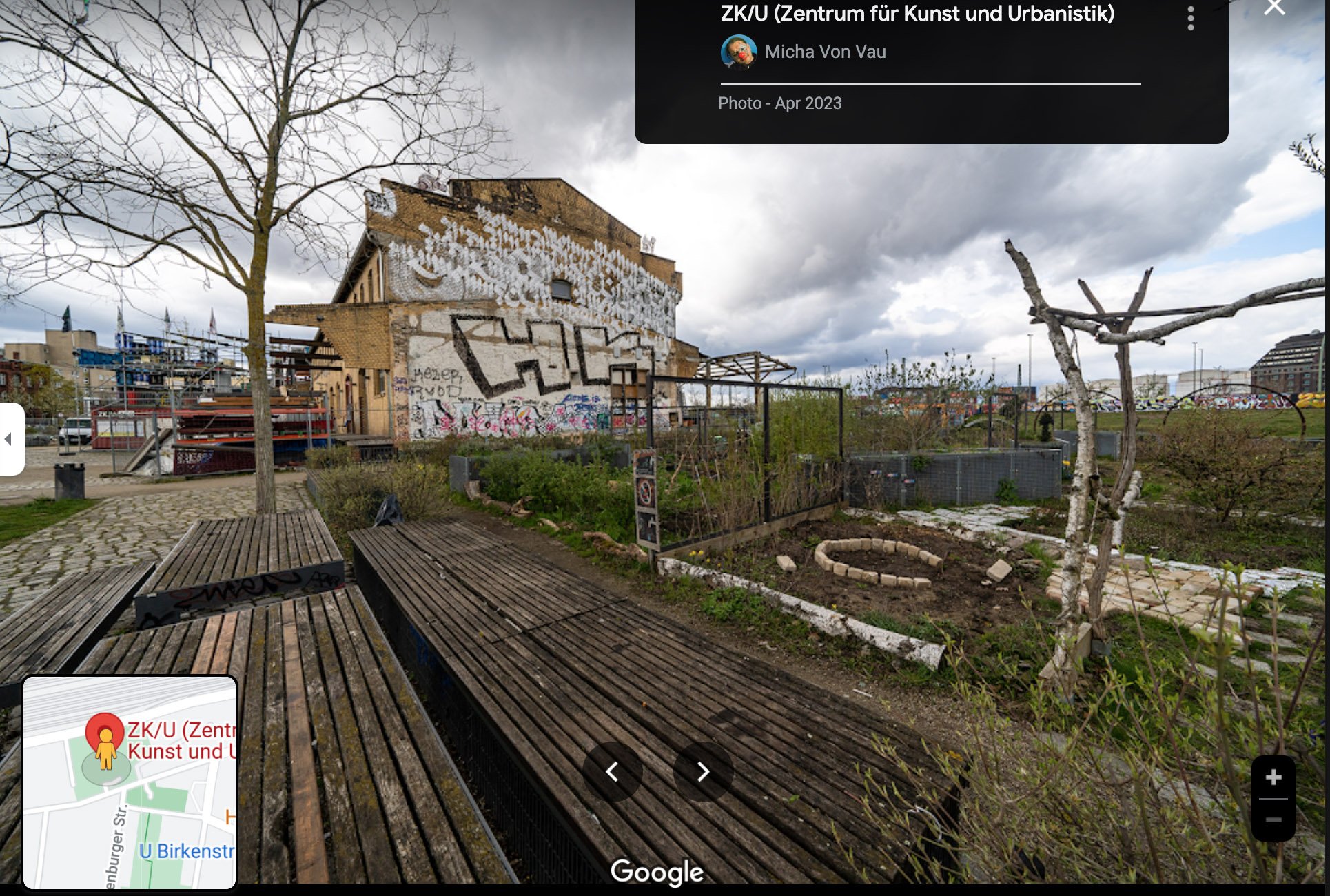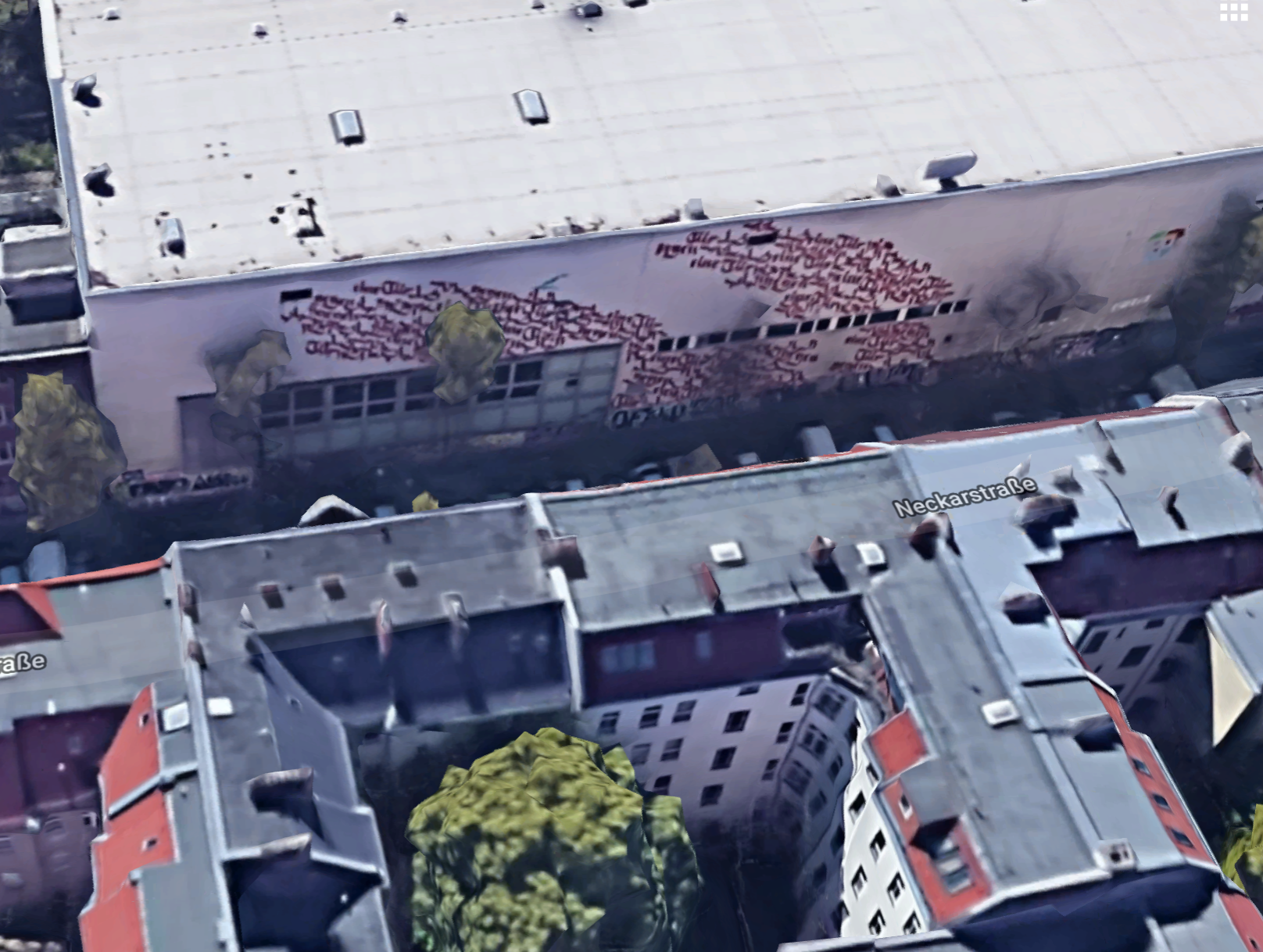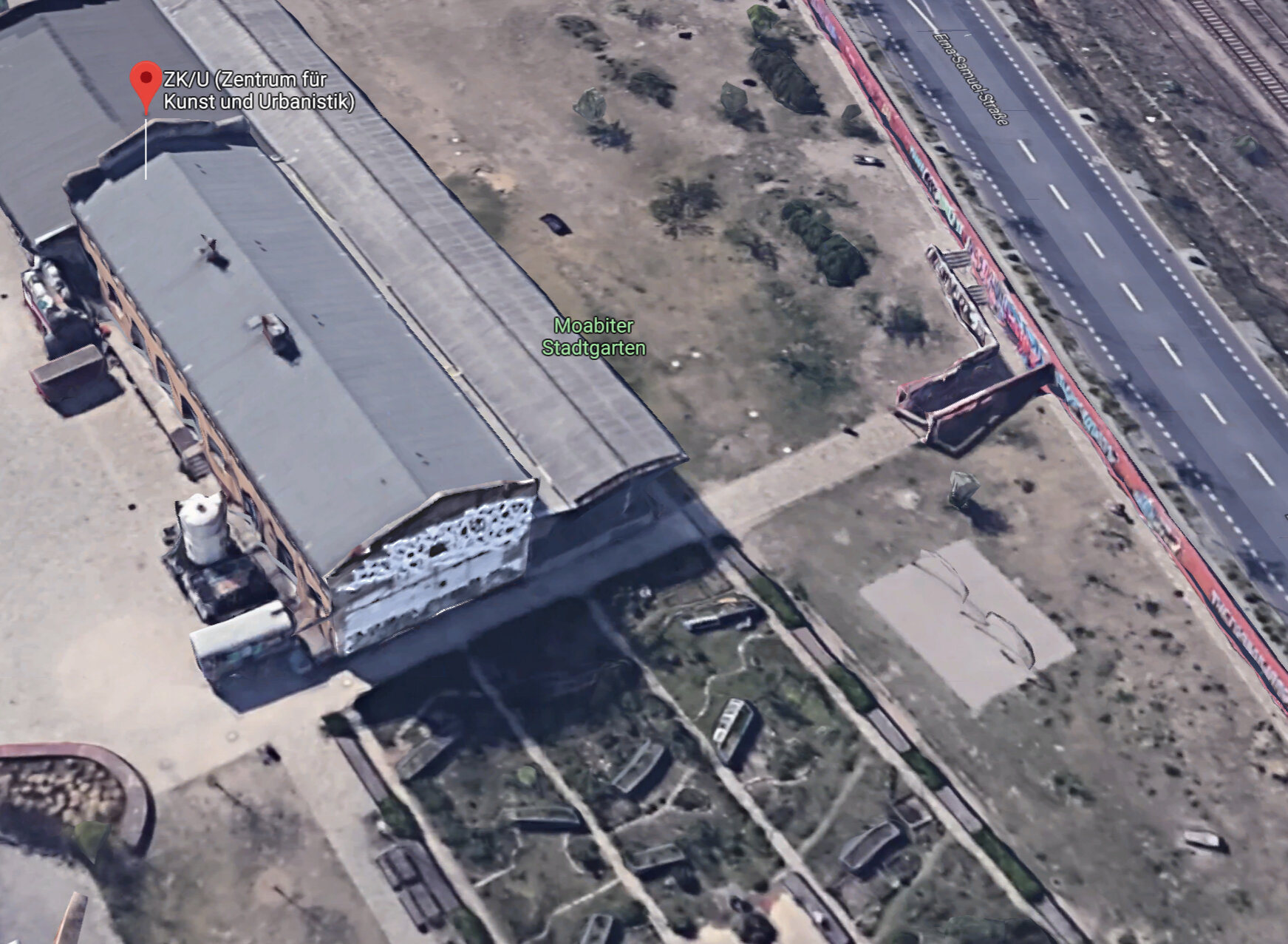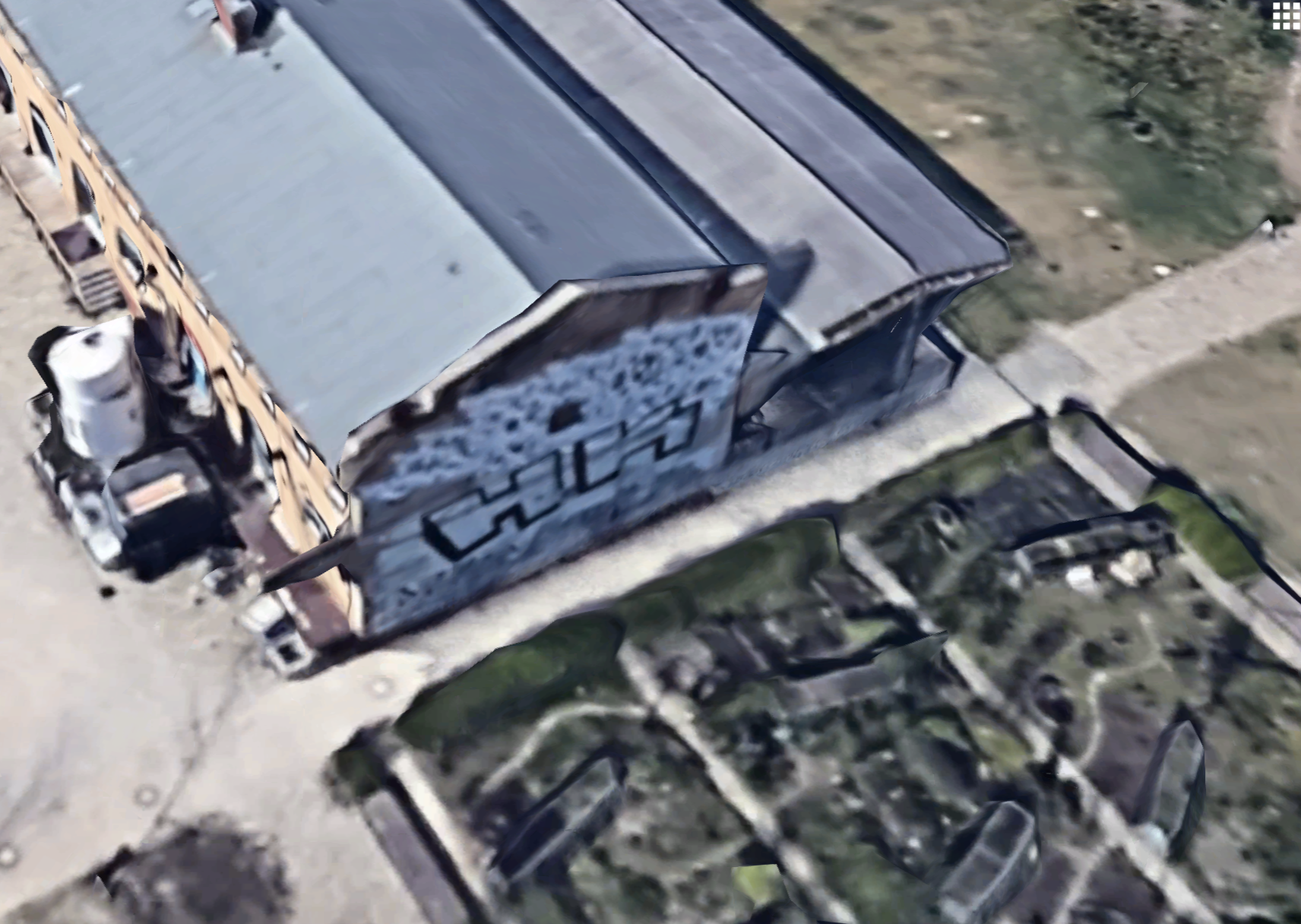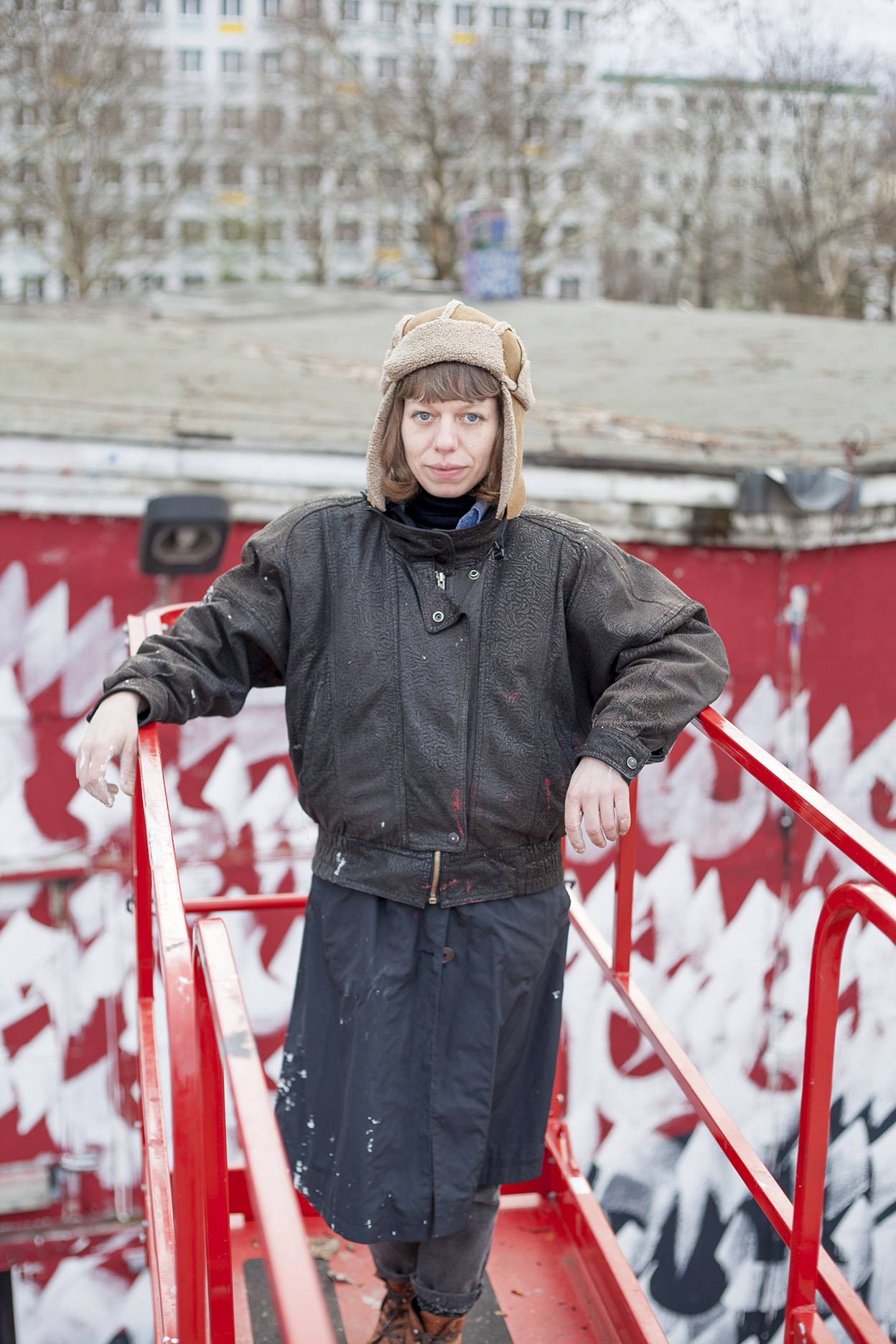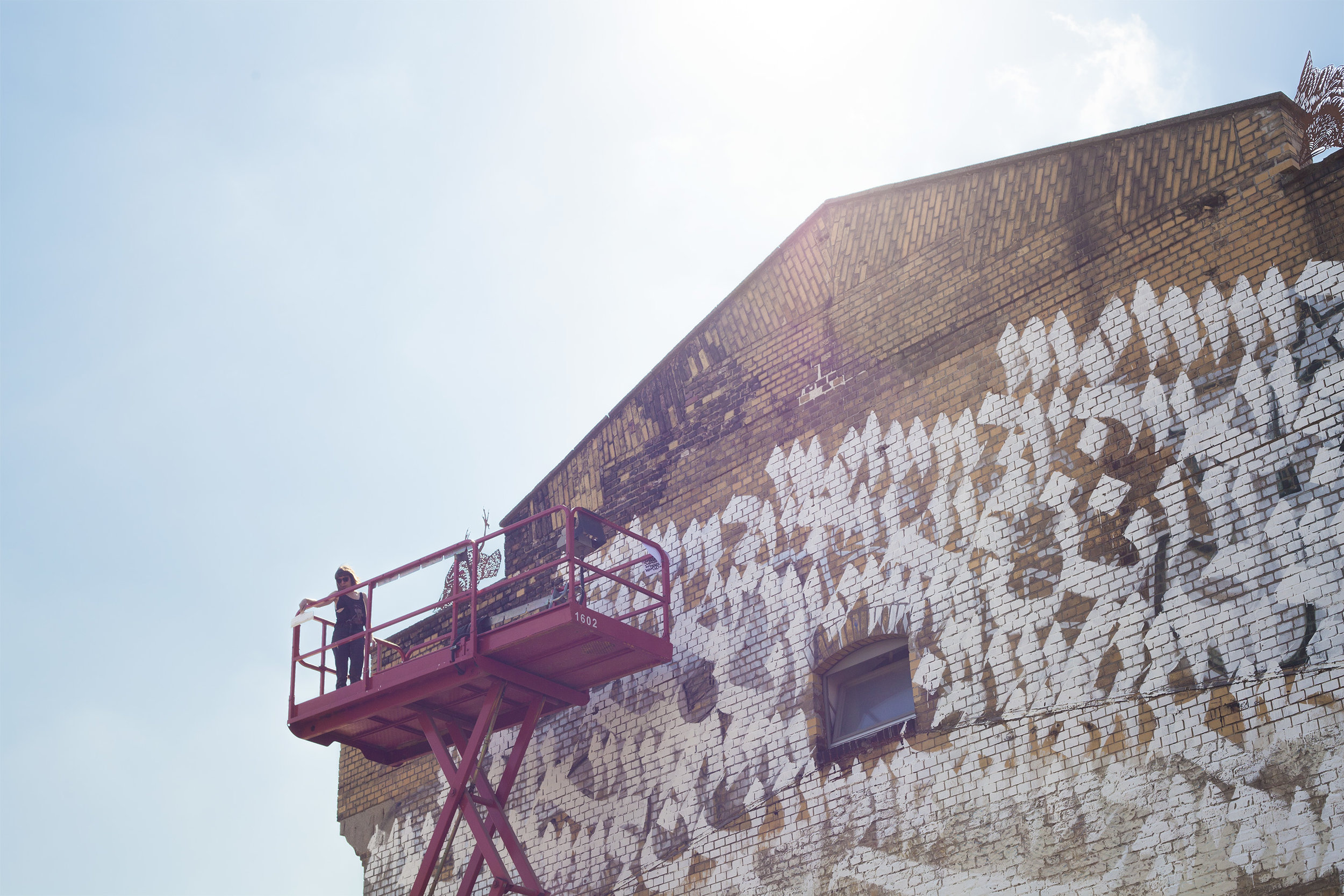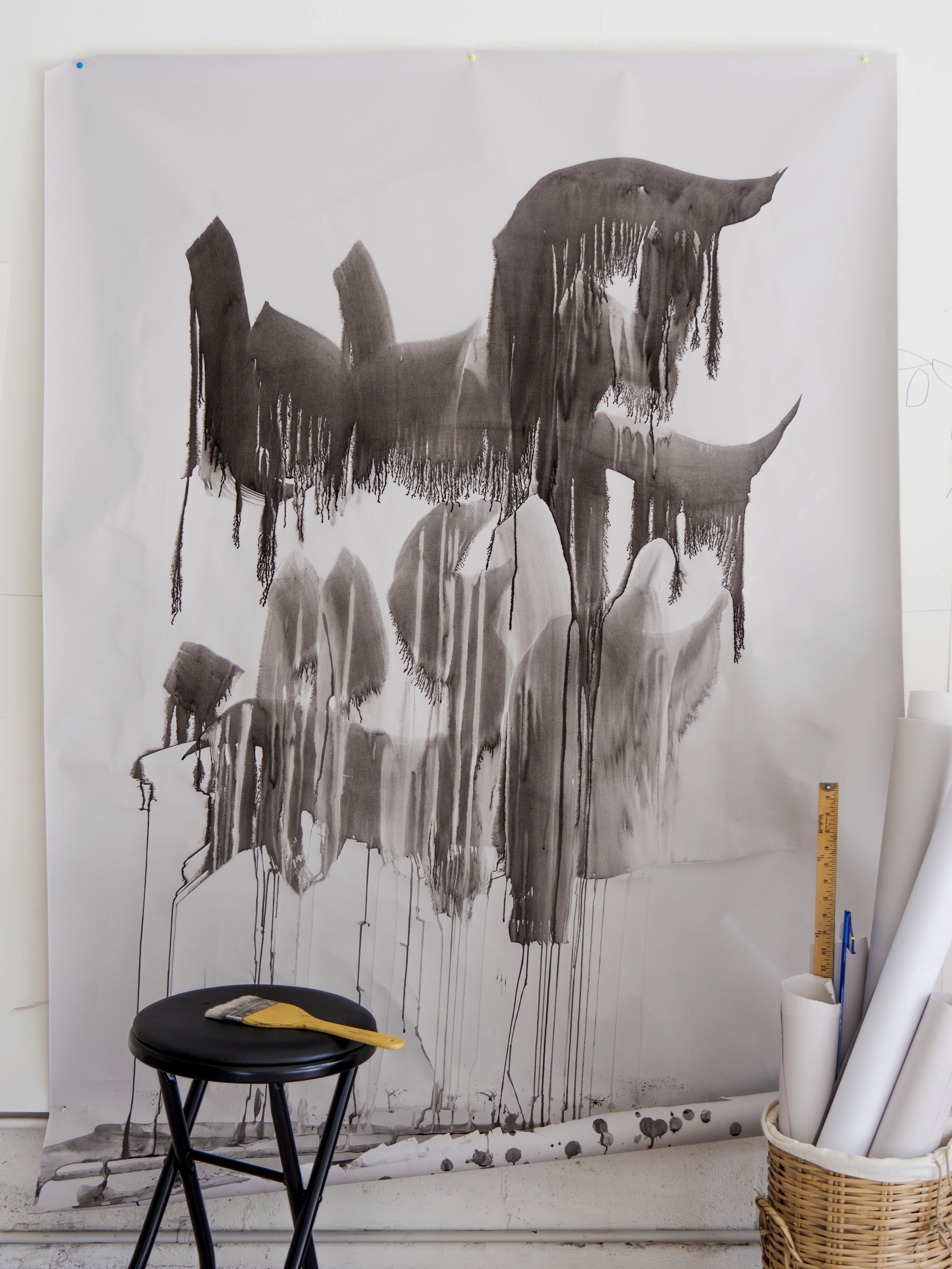Among Refugees Generation Y
Yiddish Prose as Hybrid Calligraphy in the Public Space of Berlin
A series of temporary site-specific murals in three public locations inspired by the Yiddish writer Dovid Bergelson's story "Among Refugees" (1923) my great-grandfather who lived and worked in Berlin in the 1920s.
The murals visually blend languages (Yiddish, German, Arabic) to symbolise Berlin's past, as present, cultural hybridity. Each mural presents a looped sentence from the story, carefully chosen to resonate with the building's past and present, all tied together by the theme of transition and temporality. Owing to the deliberate selection of paint in conjunction with the material properties of the walls, the murals are subject to a gradual fading and eventual disappearance, with the rate of decay varying among them. All locations hold historical significance, however, ZK/U stands out as it functioned as a deportation station during World War II, where over 30,000 Jewish Berliners were sent to forced labour, and extermination camps.
Bergelson's text delves into the varied facets of existential crisis brought forth by exile, with the author projecting his own apprehensions onto the protagonist, concerning the potential descent from esteemed status as a successful professional author to that of a deranged wanderer fabricating stories he falsely perceives to be beneficial to others. This figuratively embodies the author's anxieties of losing one's cultural heritage and language due to misplacement. Similarly, the murals aim to embody the internal struggle between an old identity and a new cultural context, encompassing the challenge of integration while preserving cultural roots. The project endeavours to establish a parallel between Weimar's capital and contemporary Berlin as a dynamic creative hub. Utilising verses in multiple languages as a medium, the murals foster a dialogue among diverse migrant and refugee communities in present-day Berlin, visually unifying different languages to represent the harmonious visual expression of Berlin's cultural hybridity.
The Author
Dovid Bergelson is considered to be one of the leading Yiddish writers of the twentieth century. In 1921, he migrated to Berlin, already established as a renowned author, amid a significant influx of Yiddish authors, poets, and scholars seeking refuge from the early 20th century Pogroms in Ukraine. Having to depart from Berlin in 1934, Bergelson was among the last from his group to relocate to Moscow. Over the next two decades, he and his colleagues engaged in fruitful artistic and political endeavours. Tragically, they were unjustly accused of treason due to their affiliation with the "Jewish Anti-Fascist Committee" during Stalin's anti-Semitic crusade against "Rootless Cosmopolitans." This led to their execution during the infamous "Night of The Murdered Poets" in 1952.
David Bergelson (6, on ground with his head on his neighbour’s knee), his wife Zipora (10, seated, second from left), and only son - Prof. Lev Bergelson (5, small child to Bergelson’s left) among a group of friends and colleagues.
Locations Map:
Mensch Meier
Storkower Str. 121, 10407 Prenzlauer Berg
People Among People
Lime paint on plaster, 20 x 5.5 m, 2019
The Mensch Meier Collective is a communication platform, based on solidarity, critical culture, music and art. It is a space for inspiration, intervention and movement.
German: Menschen unter Menschen
Arabic: الناس بين الناس
Yiddish: מענטשן צווישן מענטשן
Photos and video by Lea Fabrikant
ZK/U
Zentrum für Kunst und Urbanistik aka Der Güterbahnhof Moabit
Siemensstraße 27, 10551 Moabit
Where to?
Lime paint on brick, 10 x 5 m, 2019
German: Wohin?
Arabic: الى اين؟
Yiddish: ?וואוהין
Where from?
Lime paint on brick, 10 x 4 m, 2019
German: Von wo??
Arabic: من اين؟
Yiddish: ?פונוואנען
Historical Traces & Contemporary Use
The Güterbahnhof Moabit, a part of Berlin's first Ringbahn section inaugurated in 1871, exerted a profound influence on the industrial expansion in the northern regions of the city. Originally serving as a passenger station, it later assumed a crucial role in Berlin's freight traffic, catalysing extensive urban development in the vicinity, which, in turn, attracted immigration and gave rise to the densely populated Neu-Moabit district. Throughout its history, the station underwent multiple transformations, playing vital roles in military transport and civilian supply during World War I, as well as becoming a central deportation site for Jewish Berliners during World War II, facilitating the transportation of over 30,000 individuals to ghettos, forced labour and extermination camps in German-occupied territories.
Currently, ZK/U (Zentrum für Kunst und Urbanistik) is situated within a historically significant goods shed at the site of the Güterbahnhof, serving as a hub for idea development through cross-cultural interactions and fostering a dynamic space for ongoing artistic dialogues. The centre places emphasis on the developmental processes arising from and contributing to the distinct contexts of the fellows' creative pursuits, encompassing both localised scenarios and global discourses.
Photos by Lea Fabrikant
Kindl Brauerei
Neckarstraße 19, 12053 Neukölln
Photo by Hadas Tapuchi
A Door Facing a Door
Facade paint on a ceramic wall, 70 x 15 m, 2019
Arabic: الباب ضد الباب
German: Eine Tür gegen eine Tür
Yiddish: א טיר אקעגן א טיר
The historical origins of the structure, formerly belonging to the Berliner Kindl brewery, can be traced back to the 19th century. Following the brewery's closure in 2006, the site experienced a state of mostly abandonment. Attempts to repurpose the area as a shopping centre were unsuccessful, leading to its acquisition in 2015 by Terra Libra Immobilien GmbH, a subsidiary of the Swiss Edith Maryon Foundation. The present development overseen by Terra Libra is focused on establishing sustainable, socially self-governing, and ecologically conscious uses for the long term. The developmental process is structured incrementally, employing participatory approaches to incorporate local interests, ideas, and concerns. While certain aspects of the project have already been implemented, both the constructed elements and open spaces are poised to undergo significant transformations in the forthcoming years.
Read more >>
The mural adorning the façade of Kindl Brauerei serves to suggest a meaningful linkage between the site's historical significance as a pivotal locus of Berlin's industrial past and its present-day role as a dynamic meeting ground, drawing together a myriad of culturally diverse artists, collectives, and businesses. The conceptual essence of the project emphasises the notions of transition and temporality, culminating in a juxtaposition of multicultural intersections that echo the sociocultural clashes evident in contemporary Berlin, much akin to those observed in the city during the 1920s.
Photos by Hadas Tapuchi and Carleen Coulter
"Writers, I thought, were the conscience of the nation. They are its nerves. They present their nation to the world. People read a writer’s works because they want to learn how the nation lived at his time. And so I’ve come to you. I’ve told you everything. And now that I’ve told you everything, you are responsible as I am and even more because you are a writer."
Dovid Bergelson, Among Refugees (1927)
Supported by:
